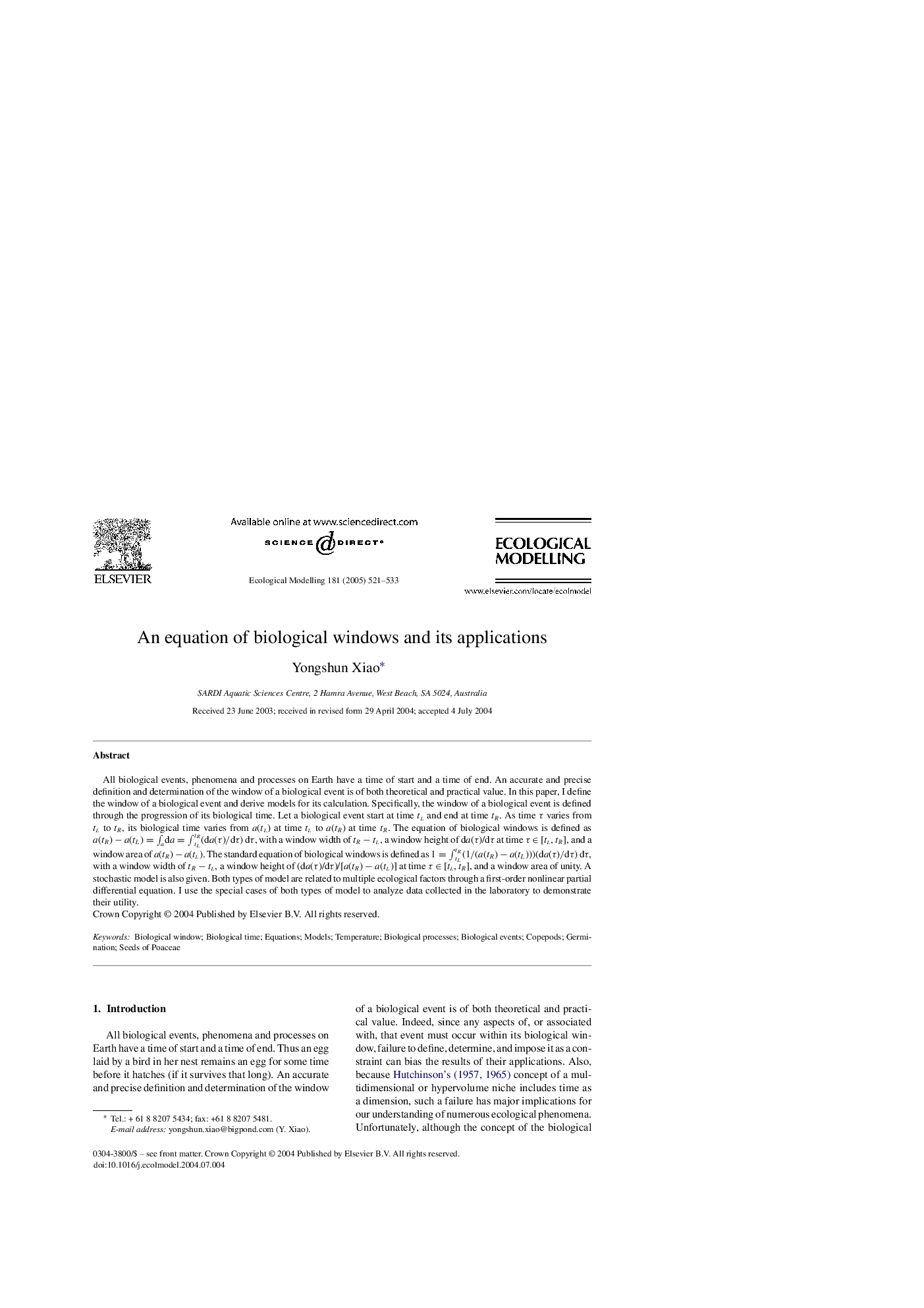| Article ID | Journal | Published Year | Pages | File Type |
|---|---|---|---|---|
| 9443643 | Ecological Modelling | 2005 | 13 Pages |
Abstract
All biological events, phenomena and processes on Earth have a time of start and a time of end. An accurate and precise definition and determination of the window of a biological event is of both theoretical and practical value. In this paper, I define the window of a biological event and derive models for its calculation. Specifically, the window of a biological event is defined through the progression of its biological time. Let a biological event start at time tL and end at time tR. As time Ï varies from tL to tR, its biological time varies from a(tL) at time tL to a(tR) at time tR. The equation of biological windows is defined as a(tR)âa(tL)=â«ada=â«tLtR(da(Ï)/dÏ)dÏ, with a window width of tR â tL, a window height of da(Ï)/dÏ at time Ï â [tL, tR], and a window area of a(tR) â a(tL). The standard equation of biological windows is defined as 1=â«tLtR(1/(a(tR)âa(tL)))(da(Ï)/dÏ)dÏ, with a window width of tR â tL, a window height of (da(Ï)/dÏ)/[a(tR) â a(tL)] at time Ï â [tL, tR], and a window area of unity. A stochastic model is also given. Both types of model are related to multiple ecological factors through a first-order nonlinear partial differential equation. I use the special cases of both types of model to analyze data collected in the laboratory to demonstrate their utility.
Related Topics
Life Sciences
Agricultural and Biological Sciences
Ecology, Evolution, Behavior and Systematics
Authors
Yongshun Xiao,
